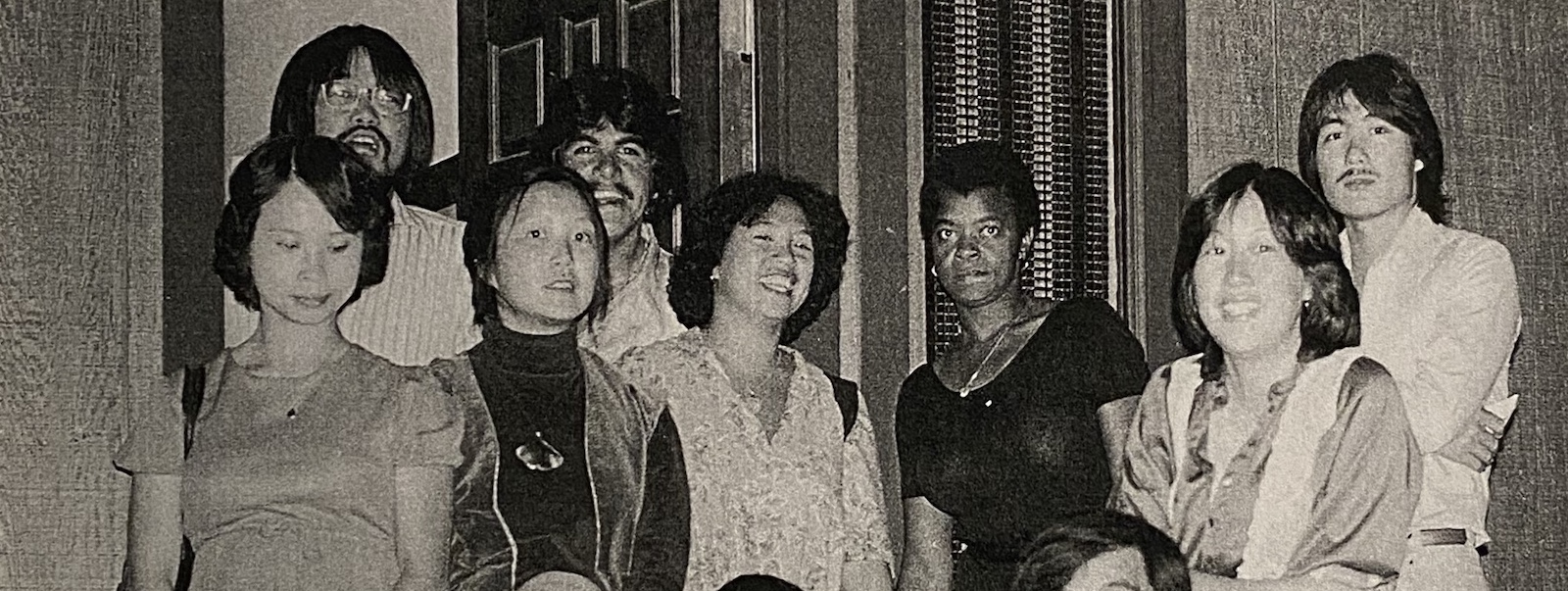1991-1997: Diversity Debate, Founding of APALI
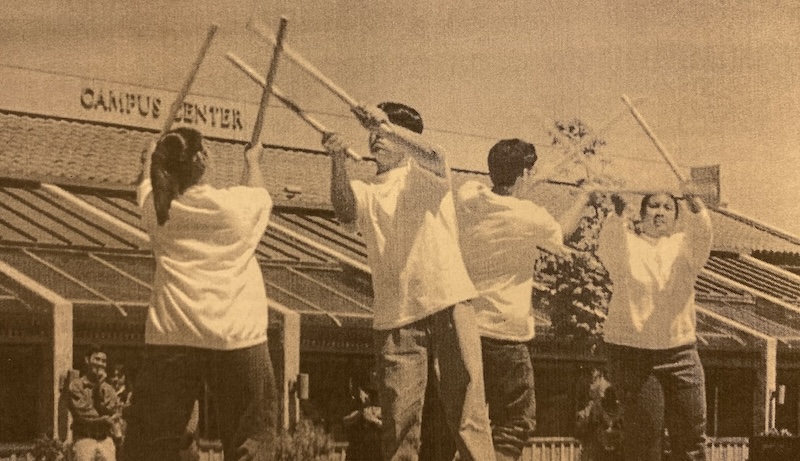
Members of PUSO (Pilipino Unity Student Organization) perform a traditional dance. (La Voz, 1997)
Overview
Due to budget cuts, IIS almost merged into the Social Sciences Division in 1993 but was saved in part due to the efforts of over 100 students and community members who spoke out in protest. Racism came to the forefront of public discussion in the form of the “diversity debate” around affirmative action and “multiculturalism.” Proponents criticized the unwillingness of institutions to change the curriculum to accommodate a changing student population, while opponents criticized these efforts for lowering academic and hiring standards.
Meanwhile, Asian American staff, faculty, and students at De Anza began to organize and politicize. The Diversity Leadership Training Project was started by political science instructor Nicky Gonzalez Yuen, the student group Coalition for Asian Advocacy (CAA) was formed with the goals of voicing Asian student concerns on campus, and a coherent Asian American Studies Department headed by Michael Chang began to materialize. Chang’s efforts eventually culminated in the founding of the Asian Pacific American Leadership Institute (APALI), marking a new era of political activism on campus.
My goal in writing this overview was to create a sense of momentum. Knowing that APALI’s founding in 1997 was a major milestone for Asian American Studies at De Anza, I wanted to highlight the on-campus Asian American advocacy leading up to that moment. I approached it like a "training montage" in a movie, building up to the "main event" by showcasing the activism and groundwork that made it possible.
Key Events
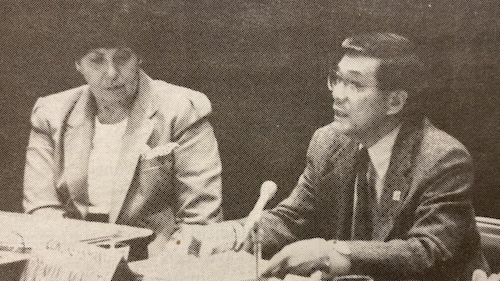
Dr. Betty Pacheco and Norman Mineta take part in the conference. (La Voz, 1991)
April 27, 1991
"Education conference held at De Anza"
A La Voz article reports that APASA joined with AACI for a conference about education in room A-11. The purpose of the conference was to "initiate a thoughtful dialogue among parents, teachers, students, public officials, and administrators."
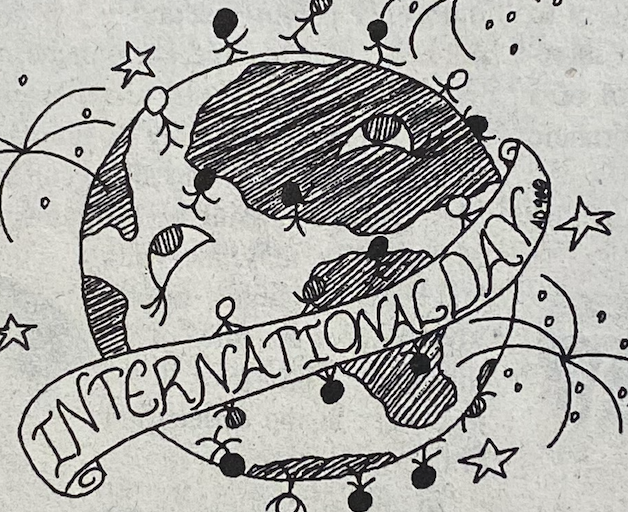
"International Day" logo. (La Voz, 1990s)
December 5, 1991
“Racism among DAC faculty” v. “Multiculturalism isn’t everything”
APASA co-founder Susanne Chan publishes a letter calling out De Anza faculty for being “downright racist and bigoted in their approach to teaching and our multi-ethnic student population.” Math instructor Scott Peterson responds, claiming that “the implementation of multicultural curricula…have been given visibility almost to the exclusion of all other issues regarding teaching.”
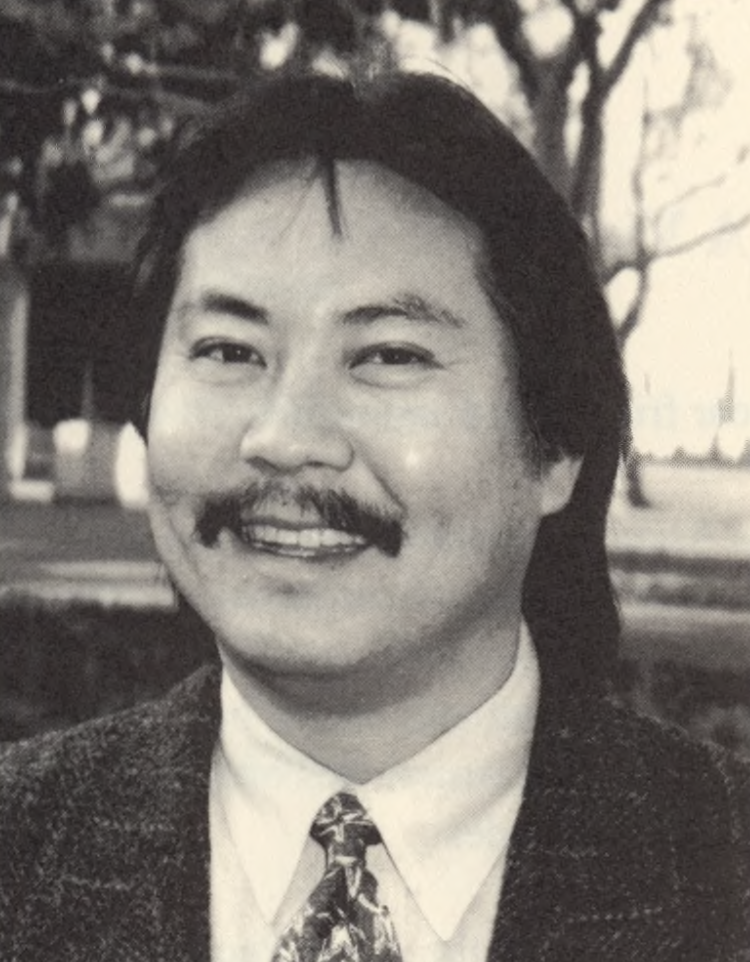
Duane Kubo (APALI opening ceremony program, 1997)
Fall 1992
Duane Kubo becomes Dean
Duane Kubo becomes Interim Dean of Creative Arts and IIS; he later becomes the full-time Dean of IIS. During his tenure, he helps formalize the Division as a competitive academic entity by focusing on student enrollment and faculty growth. Part of this formalization involves incorporating all world language classes.
He also helps develop the Multicultural/International Center, a new component of the Division which hosts activities, events, and programs such as the Pow Wow, Intercultural Resources forum, and Asian Pacific Heritage Month.
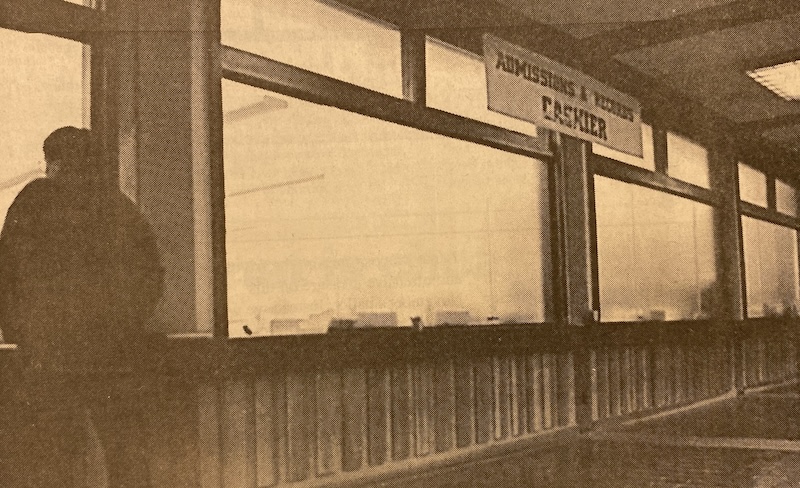
Cashier's office. (La Voz, circa 1990)
January 1993
Ethnic Studies in danger
A La Voz article entitled "IIS: The struggle goes on" reports that IIS almost gets merged into the Social Sciences Division due to budget cuts.
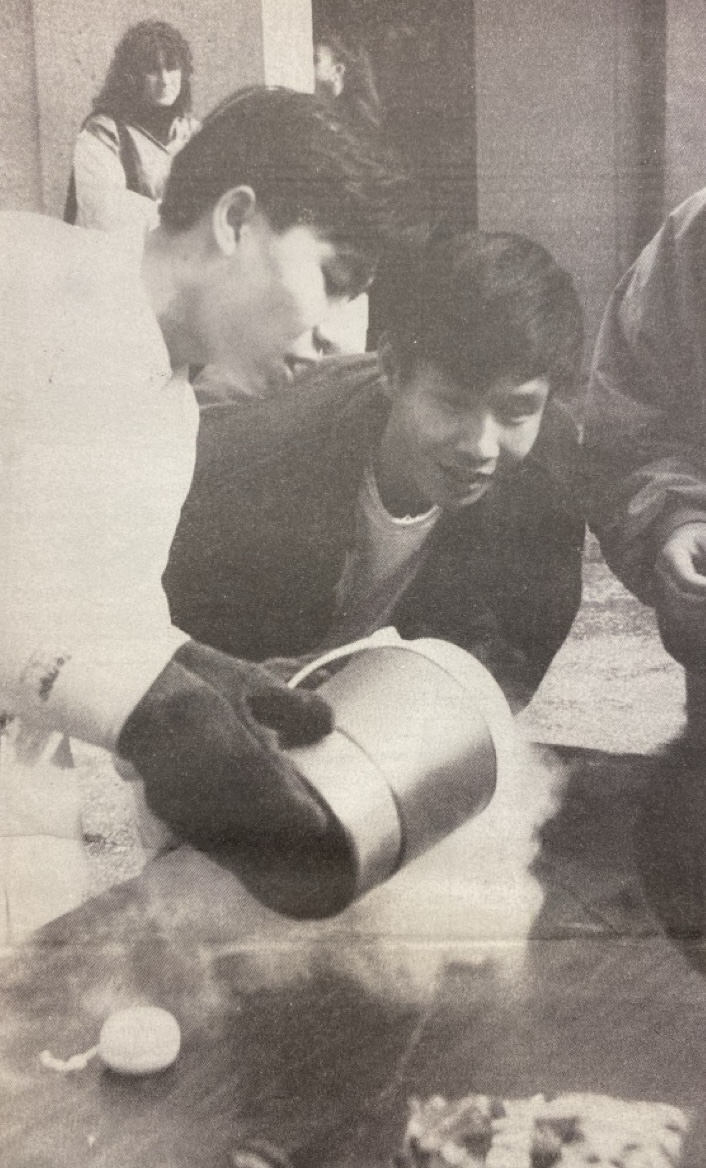
Students participate in Club Day activities. (La Voz, 1993)
Spring 1993
CAA formed
A La Voz article entitled "Asians unite to fight" reports that the Coalition for Asian Advocacy (CAA) is created to "promote the interests of the Asian American student community at De Anza and to serve as a vehicle for articulating the views and concerns of that community."

Paul Fong (La Voz, October 1993)
Fall 1993
Paul Fong elected
Paul Fong, former De Anza student, Asian American Studies instructor, and AACI member, gets elected to the District Board of Trustees where he serves until 2008.
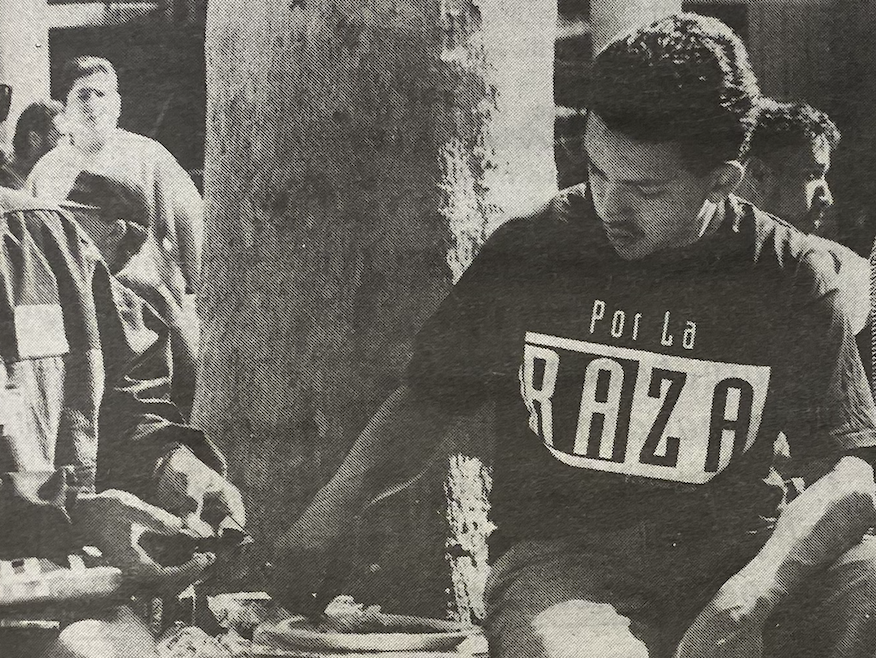
Students gather in front of the Hinson Campus Center for the La Raza/Latino Conference. (La Voz, February 1992)
Summer 1994
Campus Diversity Training Project begins
Political Science instructor Nicky Gonzalez Yuen secures funding from the DASB and the college for a Campus Diversity Training Project. This project was initiated in the wake of a Campus Climate Survey conducted at De Anza in which 30 percent of the faculty and staff surveyed perceived the climate as sexist, racist, or homophobic.
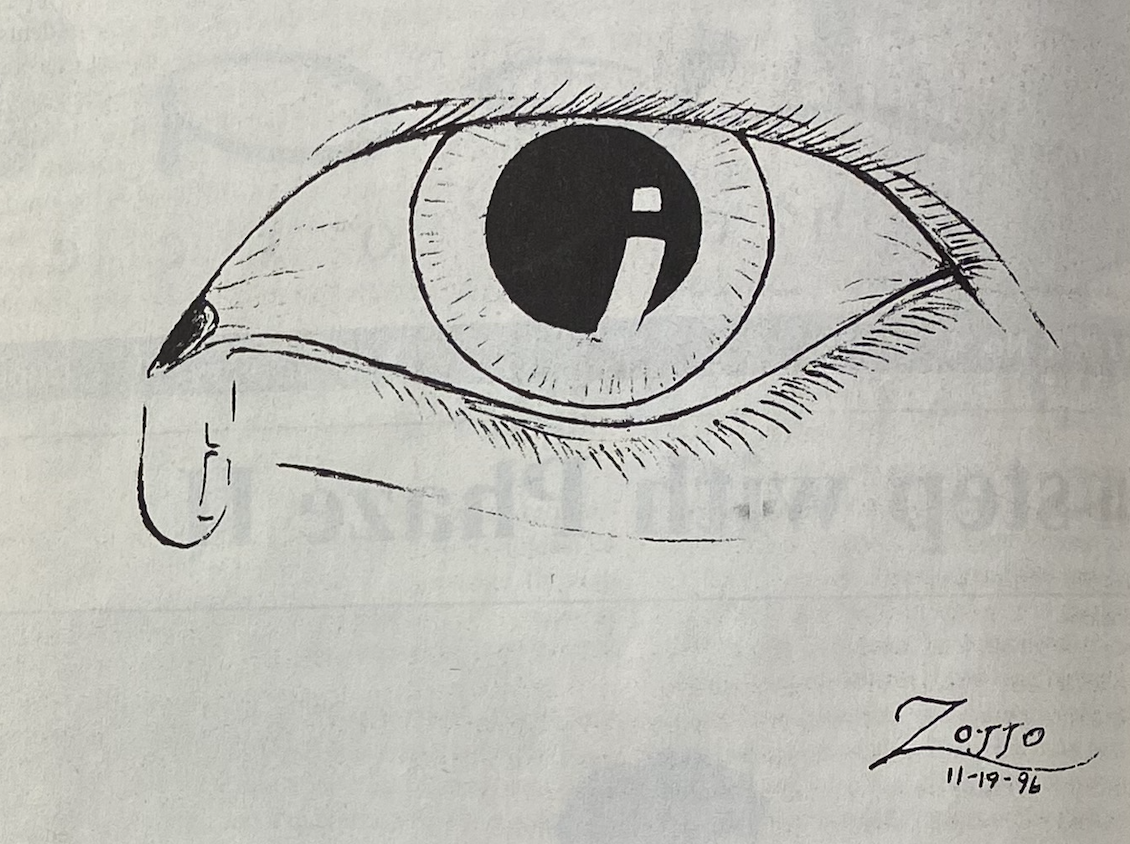
Student artwork. (La Voz, 1996)
October 5, 1995
Hate fliers spark campus-wide "teach-in"
In response to the hate fliers found on De Anza campus on September 29, administrators, staff and students organize a 60s-style “teach-in” in the main quad to voice their intolerance of racism. Speakers attribute racism to ignorance, and suggest that more Ethnic Studies classes should be offered at De Anza.
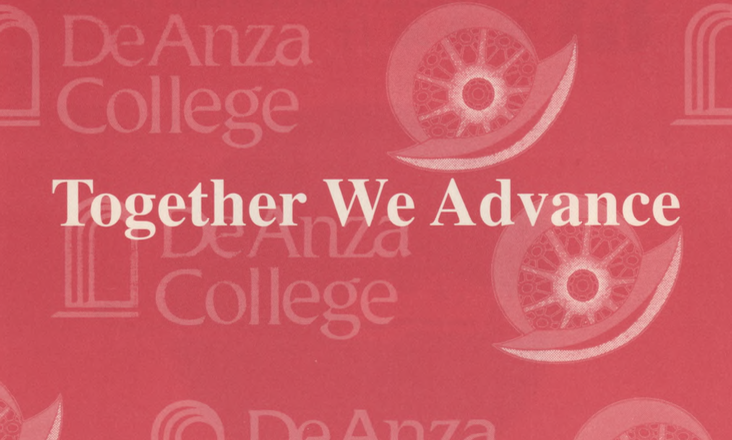
Front page of the APALI opening ceremony program, 1997
December 1, 1997
APALI opening ceremony
The opening ceremony for the Asian Pacific American Leadership Institute (APALI), entitled "Together We Advance," is held at De Anza College. APALI's founder, Michael Chang, is honored as the first Asian American mayor of Cupertino.
Takeaways
It feels like Ethnic Studies was still swimming against the tide.
De Anza established Ethnic Studies as part of the fight against institutional racism. On the whole, the college found that compelling in its early years. But the social consciousness of the 1960s seemed to have really ebbed as time went on.
So by the 1990s, Ethnic Studies was really vulnerable—still. It almost collapsed and merged with Social Sciences Division—again.
The national debate over "multiculturalism" and education was taking place at De Anza too. And it was heated.
What's striking to me is that even in this environment, Asian American Studies was able to survive and even grow. I think the voices of Paul Fong (FHDA trustee), Nicky Gonzalez-Yuen (faculty), and Susanne Chan (counselor, APASA co-founder) contributed to the growing wave of Asian American Studies.
Duane Kubo became Dean of IIS in 1992. Michael founded APALI in 1997, the same year he became the first Asian American mayor of Cupertino. APALI became a training ground for leadership education. For De Anza students and for the surrounding community. All of this raised the profile of Asian American Studies. It created a community of allies and supporters for it.
It's clear to me that the political clout of APALI bolstered Asian American Studies.

